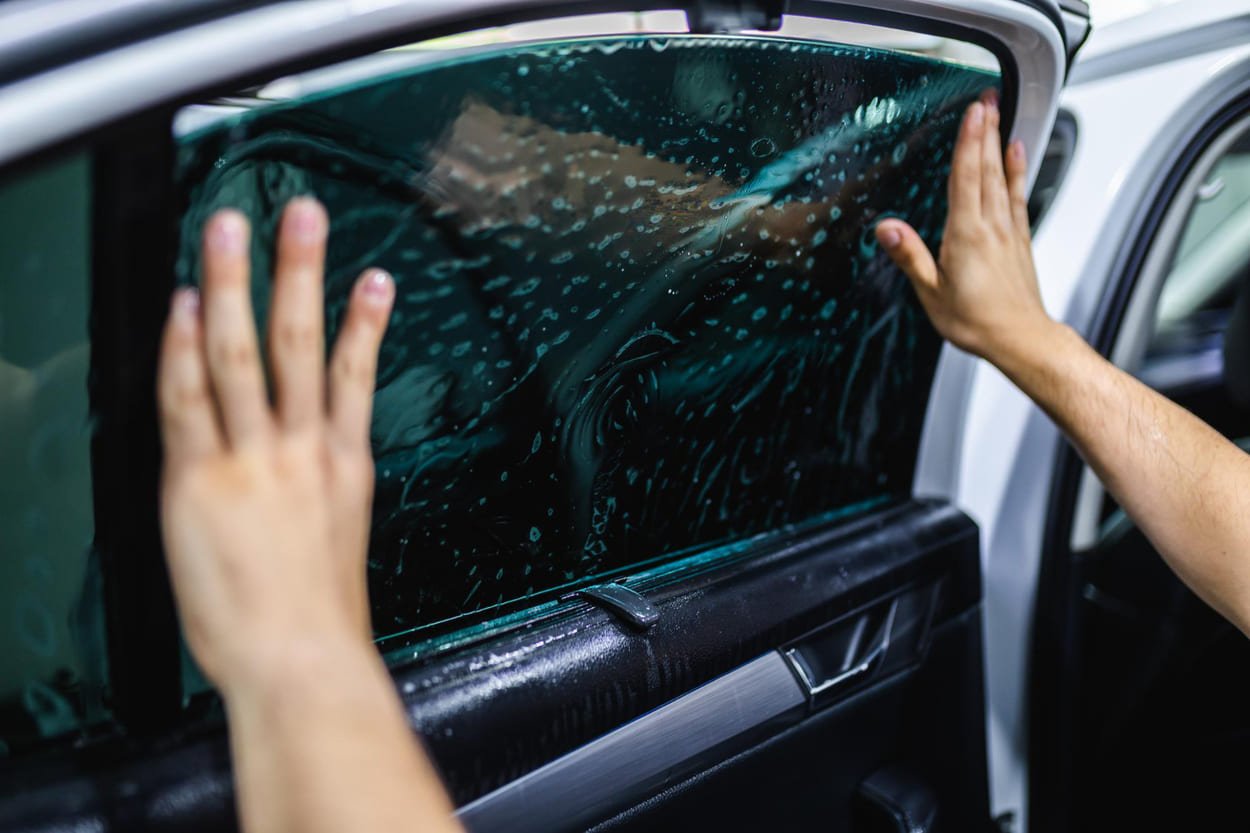Car Window Tinting Services: Protect Your Vehicle and Enhance Its Look
Car Window Tinting Services: Protect Your Vehicle and Enhance Its Look
Blog Article
The Complete Failure of Automobile Window Tinting Regulations: Remain Informed and Avoid Pricey Fines
Understanding the intricacies of automobile window tinting legislations is vital for every automobile proprietor. Allow's check out the subtleties of home window tinting regulations, from legal percentages to enforcement steps, and uncover the essential suggestions for preserving tinting compliance.

Relevance of Recognizing Tinting Regulations
Recognizing tinting legislations is important for car owners to make sure compliance with laws and avoid possible fines or fines. Each state has certain laws pertaining to the darkness of window tinting permitted on automobiles. These legislations are in place to make certain the safety of drivers, pedestrians, and police policemans. By being educated regarding tinting regulations, cars and truck owners can make educated choices about their automobile alterations and prevent the hassle of having to get rid of prohibited tint.
In addition to lawful consequences, incorrect home window tinting can also impact visibility while driving, particularly during the night or in damaging weather. Dark home window colors can minimize presence for the driver and obstruct the view of pedestrians or other cars, boosting the threat of accidents. car tint. Understanding the tinting legislations can help vehicle drivers strike a balance in between aesthetic appeals and safety
Moreover, adhering to tinting regulations can also avoid unneeded costs. Eliminating illegal tint and paying penalties can be pricey, including economic worries to automobile proprietors. By complying with tinting laws initially, drivers can stay clear of these added costs and make certain a smooth driving experience without interruptions from law enforcement.
Sorts Of Window Tinting Rules
Having a clear understanding of the significance of following tinting laws, it is necessary to recognize the different kinds of window tinting guidelines applied across different states. These laws usually focus on the Visible Light Transmission (VLT) portion, which gauges the amount of light allowed to pass via the tinted home windows. States like California have stringent guidelines, permitting just 70% VLT for the front side home windows and windscreen, while states such as North Dakota permit as much as 50% VLT. In addition, some states have varying regulations for back windows and side home windows behind the driver. It's crucial for automobile proprietors to familiarize themselves with these particular policies to stay clear of citations or penalties.
In addition, particular states might additionally have policies regarding the reflective residential or commercial properties of window color and the use of certain shades. For example, reflective tint is commonly forbidden, and colors like red, amber, and yellow may not be enabled due to visibility issues. Comprehending these nuances in home window tinting guidelines can help cars and truck proprietors make educated decisions when tinting their windows to guarantee conformity with the law.
Lawful Tinting Percentage Standards
Checking out the permissible tinting percents established by state regulations supplies essential support for car proprietors seeking to comply with legal laws (tampa window tinting). These standards dictate the maximum permitted darkness for home window tints, typically determined in Visible Light Transmission (VLT) percent-- the amount of light that can pass via the tint. Some states may allow a VLT of 70% on the front side home windows, while others just enable 50%. Back side windows and the rear windscreen frequently have various VLT limits, which can range states.
Recognizing these legal tinting percentage guidelines is vital to make certain conformity and avoid potential penalties or fines. Failing to stick to the defined VLT restrictions can cause citations, requiring removal of unlawful colors or facing monetary fines. Therefore, before applying window colors to a lorry, it is advisable to research and familiarize oneself with the tinting regulations specific to the state of registration. By complying with these policies, automobile owners can delight in the benefits of window tinting while staying on the best side of the law.

Enforcement and Effects of Infractions
Imposing the well-known tinting portion standards is essential in keeping compliance with state legislations on vehicle home window tinting. Failing to abide by these laws can result in different effects for vehicle proprietors. Police conduct routine checks to ensure automobiles meet the defined tint darkness limits. If a violation is determined, the consequences can include penalties, citations, and also required elimination of the illegal color. In many cases, repeated offenses may cause extra severe charges, such as factors on the motorist's license or lorry these details registration suspension. Furthermore, driving an automobile with exceedingly colored home windows can posture safety dangers by minimizing exposure for the vehicle driver and others when traveling. To avoid these enforcement actions and potential risks, it is necessary for auto proprietors to remain educated concerning the tinting regulations in their state and guarantee their lorry's home window colors abide with the defined laws.
Tips for Compliant Window Tinting
To ensure conformity with cars and truck window tinting regulations, it is very important for car owners to adhere to specific pointers for picking and applying home window colors. First of all, constantly check the neighborhood policies pertaining to allowable tint degrees for each and every home window of your vehicle. Different states have varying legislations, so comprehending navigate to this site these standards is crucial. Second of all, go with high-quality color movies that are compliant with the well-known requirements. Substandard items may not provide the preferred degree of UV protection or might fade gradually, resulting in potential lawful problems. In addition, consider having a specialist window tinting solution install the color. This can assist make certain that the tint is used properly, decreasing the risk of bubbles, creases, or irregular protection that can lead to non-compliance. Lastly, preserve your color regularly by cleaning it with approved items to stop it from bubbling or peeling off, which could bring in undesirable focus from authorities. By adhering to these pointers, you can enjoy the benefits of window tinting while remaining within the boundaries of the regulation.

Conclusion
In final thought, it is article important to be educated concerning auto window tinting laws to avoid potential penalties and penalties. Understanding the various types of policies and legal tinting percent standards can aid make sure conformity with the legislation.
Having a clear understanding of the significance of conforming with tinting laws, it is essential to be mindful of the various types of window tinting policies enforced throughout numerous states. Comprehending these nuances in home window tinting laws can assist cars and truck owners make informed choices when tinting their windows to ensure conformity with the legislation.
Before using home window colors to an automobile, it is a good idea to study and familiarize oneself with the tinting laws certain to the state of registration. To stay clear of these enforcement actions and prospective risks, it is important for auto owners to remain informed concerning the tinting legislations in their state and ensure their vehicle's window colors conform with the specified guidelines.
To guarantee conformity with cars and truck window tinting legislations, it is vital for car proprietors to follow certain tips for picking and using home window tints.
Report this page